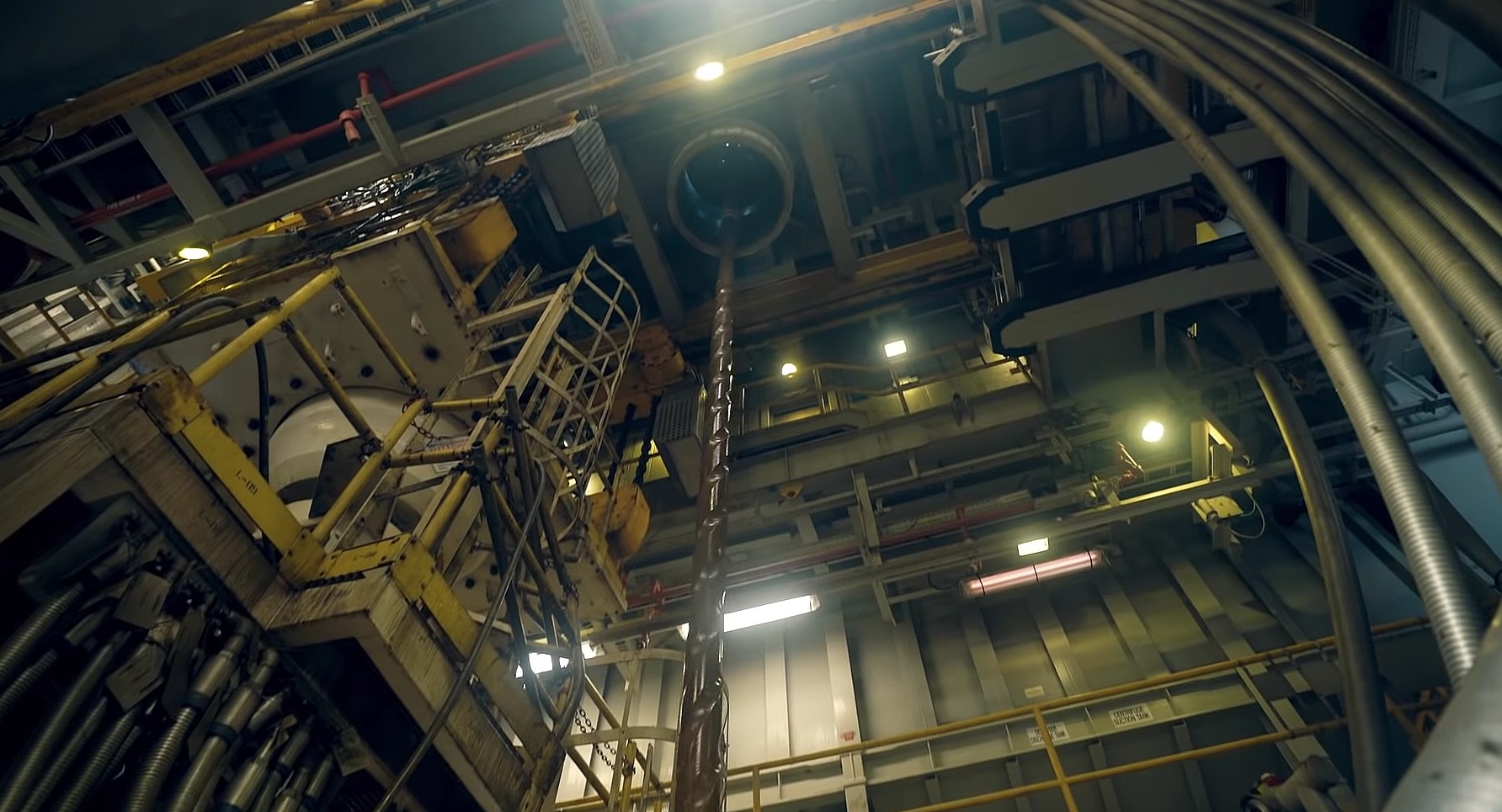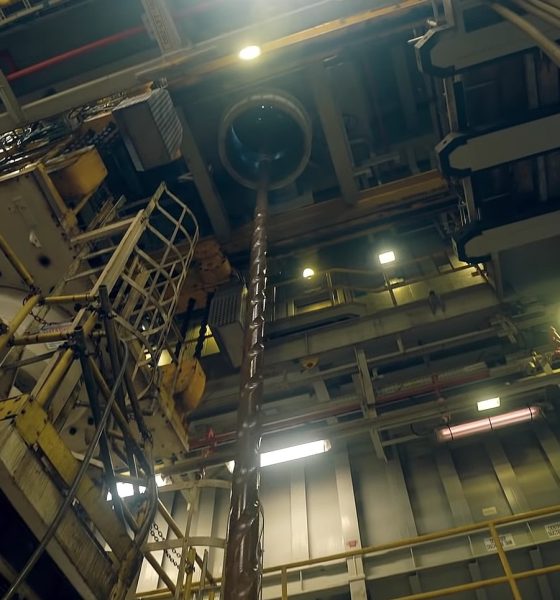

News
European Investment Bank set to vote on a major fossil fuel lending policy
The European Investment Bank (EIB), the world’s largest international public lending institution, will meet on October 15 to determine whether or not they should continue to fund oil and gas companies with billions of dollars. A potential cut in funding would mean a huge victory for eco-friendly groups, as it would bring an end to direct financial support from the EIB to the main contributors to the climate crisis: oil and gas companies.
European countries and citizens have made it clear that they understand the severity and urgency of climate-based issues, with eight countries in the EU already proposing bills and laws that would begin the phase-out of petrol-powered vehicles. The sale of these cars influences a negative environmental response in a direct manner, as emissions from internal combustion engines hurt the overall quality of the environment. As protests and marches that bring to light the issues of climate change have become more popular and frequent, citizens are doing their part as human beings to increase awareness of the ever-growing issues that fossil fuels provide to the Earth.
In Europe, EIB holds the key to beginning a new era of eco-friendly investing. Bill McKibben, an author, and Schumann Distinguished Scholar in environmental studies at Middlebury College, Vermont, stated that on October 15, the EIB will meet to discuss whether they will continue to fund projects that assist in the growth of the fossil-fuel industry. This meeting could be Europe’s next big step in the war against fossil-fuels.
In 2018, the bank supplied companies in the gas and oil sector with €2.4 billion for projects. If the EIB decides to begin pulling funding from petroleum-based projects, it could pave the way for eco-friendly options to receive financial backing. The EIB’s staff has proposed an end to providing gas and oil companies with funding, a project that would go into effect in 2020. However, resistance is expected to be encountered by governments who still believe in the use of fossil fuels: Germany and Italy to name a couple.
Climate activists know that the first steps in beginning the phase-out period for the use of pollution-inducing petroleum projects is to cut funding. Without money, projects cannot flourish. A key factor in fighting the fossil-fuel sector is to stop funding projects that do not help our environment. With ocean levels rising and global temperatures reaching all-time highs, the time to act is now.
In the U.S., the climate movement is alive and well, but the issue is navigating the government away from projects that involve gas and oil companies. With the country’s current political climate, there seems to be little hope that climate activists will be able to make any significant changes before the 2020 election. But that doesn’t mean that companies and organizations are not making efforts to initiate a “greener” future. In September 2019, the University of California scrapped an $80 billion endowment for stocks that would support fossil fuels.
Whether looking at the world from a transportation or energy stance, it is clear that the future is electric. Oil and gas are becoming less and less convenient, especially for 800,000 homeowners in California’s Bay Area after Pacific Gas and Electric (PG&E) shut off power in an attempt to reduce the possibility of forest fires at the beginning of the windy Autumn season. Tesla CEO Elon Musk made every attempt to help alleviate some of the inconveniences for those who are still without power by offering a discount on the installation of solar and battery systems for residences. In addition, Musk announced that Tesla owners would be able to charge their vehicles with the help of Tesla Powerpacks that will be installed to Supercharger stations within the affected region.
The next few years will be a crucial time for the Earth, as scientists have suggested that a significant amount of effort is needed to fight the global climate crisis. The United Nations’ leading climate scientists have warned that we have 12 years to begin fighting climate issues seriously, or there could be major consequences. Generations to come will have an unlimited amount of issues to fight, such as water and food shortages if action is not taken soon. But the question that remains is this: Can we afford to test this theory? Scientists could be wrong in the estimations, but can humans take the chance?

News
Tesla (TSLA) receives “Buy” rating and $551 PT from Canaccord Genuity
He also maintained a “Buy” rating for TSLA stock over the company’s improving long-term outlook, which is driven by autonomy and robotics.

Canaccord Genuity analyst George Gianarikas raised his Tesla (NASDAQ:TSLA) price target from $482 to $551. He also maintained a “Buy” rating for TSLA stock over the company’s improving long-term outlook, which is driven by autonomy and robotics.
The analyst’s updated note
Gianarikas lowered his 4Q25 delivery estimates but pointed to several positive factors in the Tesla story. He noted that EV adoption in emerging markets is gaining pace, and progress in FSD and the Robotaxi rollout in 2026 represent major upside drivers. Further progress in the Optimus program next year could also add more momentum for the electric vehicle maker.
“Overall, yes, 4Q25 delivery expectations are being revised lower. However, the reset in the US EV market is laying the groundwork for a more durable and attractive long-term demand environment.
“At the same time, EV penetration in emerging markets is accelerating, reinforcing Tesla’s potential multi‑year growth runway beyond the US. Global progress in FSD and the anticipated rollout of a larger robotaxi fleet in 2026 are increasingly important components of the Tesla equity story and could provide sentiment tailwinds,” the analyst wrote.
Tesla’s busy 2026
The upcoming year would be a busy one for Tesla, considering the company’s plans and targets. The autonomous two-seat Cybercab has been confirmed to start production sometime in Q2 2026, as per Elon Musk during the 2025 Annual Shareholder Meeting.
Apart from this, Tesla is also expected to unveil the next-generation Roadster on April 1, 2026. Tesla is also expected to start high-volume production of the Tesla Semi in Nevada next year.
Apart from vehicle launches, Tesla has expressed its intentions to significantly ramp the rollout of FSD to several regions worldwide, such as Europe. Plans are also underway to launch more Robotaxi networks in several more key areas across the United States.
News
Waymo sues Santa Monica over order to halt overnight charging sessions
In its complaint, Waymo argued that its self-driving cars’ operations do not constitute a public nuisance, and compliance with the city’s order would cause the company irreparable harm.

Waymo has filed a lawsuit against the City of Santa Monica in Los Angeles County Superior Court, seeking to block an order that requires the company to cease overnight charging at two facilities.
In its complaint, Waymo argued that its self-driving cars’ operations do not constitute a public nuisance, and compliance with the city’s order would cause the company irreparable harm.
Nuisance claims
As noted in a report from the Los Angeles Times, Waymo’s two charging sites at Euclid Street and Broadway have operated for about a year, supporting the company’s growing fleet with round-the-clock activity. Unfortunately, this has also resulted in residents in the area reportedly being unable to sleep due to incessant beeping from self-driving taxis that are moving in and out of the charging stations around the clock.
Frustrated residents have protested against the Waymos by blocking the vehicles’ paths, placing cones, and “stacking” cars to create backups. This has also resulted in multiple calls to the police.
Last month, the city issued an order to Waymo and its charging partner, Voltera, to cease overnight operations at the charging locations, stating that the self-driving vehicles’ activities at night were a public nuisance. A December 15 meeting yielded no agreement on mitigations like software rerouting. Waymo proposed changes, but the city reportedly insisted that nothing would satisfy the irate residents.
“We are disappointed that the City has chosen an adversarial path over a collaborative one. The City’s position has been to insist that no actions taken or proposed by Waymo would satisfy the complaining neighbors and therefore must be deemed insufficient,” a Waymo spokesperson stated.
Waymo pushes back
In its legal complaint, Waymo stated that its “activities at the Broadway Facilities do not constitute a public nuisance.” The company also noted that it “faces imminent and irreparable harm to its operations, employees, and customers” from the city’s order. The suit also stated that the city was fully aware that the Voltera charging sites would be operating around the clock to support Waymo’s self-driving taxis.
The company highlighted over one million trips in Santa Monica since launch, with more than 50,000 rides starting or ending there in November alone. Waymo also criticized the city for adopting a contentious strategy against businesses.
“The City of Santa Monica’s recent actions are inconsistent with its stated goal of attracting investment. At a time when the City faces a serious fiscal crisis, officials are choosing to obstruct properly permitted investment rather than fostering a ‘ready for business’ environment,” Waymo stated.
News
Tesla FSD v14.2.2 is getting rave reviews from drivers
So far, early testers have reported buttery-smooth drives with confident performance, even at night or on twisty roads.

Tesla Full Self-Driving (Supervised) v14.2.2 is receiving positive reviews from owners, with several drivers praising the build’s lack of hesitation during lane changes and its smoother decision-making, among others.
The update, which started rolling out on Monday, also adds features like dynamic arrival pin adjustment. So far, early testers have reported buttery-smooth drives with confident performance, even at night or on twisty roads.
Owners highlight major improvements
Longtime Tesla owner and FSD user @BLKMDL3 shared a detailed 10-hour impression of FSD v14.2.2, noting that the system exhibited “zero lane change hesitation” and “extremely refined” lane choices. He praised Mad Max mode’s performance, stellar parking in locations including ticket dispensers, and impressive canyon runs even in dark conditions.
Fellow FSD user Dan Burkland reported an hour of FSD v14.2.2’s nighttime driving with “zero hesitations” and “buttery smooth” confidence reminiscent of Robotaxi rides in areas such as Austin, Texas. Veteran FSD user Whole Mars Catalog also demonstrated voice navigation via Grok, while Tesla owner Devin Olsen completed a nearly two-hour drive with FSD v14.2.2 in heavy traffic and rain with strong performance.
Closer to unsupervised
FSD has been receiving rave reviews, even from Tesla’s competitors. Xpeng CEO He Xiaopeng, for one, offered fresh praise for FSD v14.2 after visiting Silicon Valley. Following extended test drives of Tesla vehicles running the latest FSD software, He stated that the system has made major strides, reinforcing his view that Tesla’s approach to autonomy is indeed the proper path towards autonomy.
According to He, Tesla’s FSD has evolved from a smooth Level 2 advanced driver assistance system into what he described as a “near-Level 4” experience in terms of capabilities. While acknowledging that areas of improvement are still present, the Xpeng CEO stated that FSD’s current iteration significantly surpasses last year’s capabilities. He also reiterated his belief that Tesla’s strategy of using the same autonomous software and hardware architecture across private vehicles and robotaxis is the right long-term approach, as it would allow users to bypass intermediate autonomy stages and move closer to Level 4 functionality.








